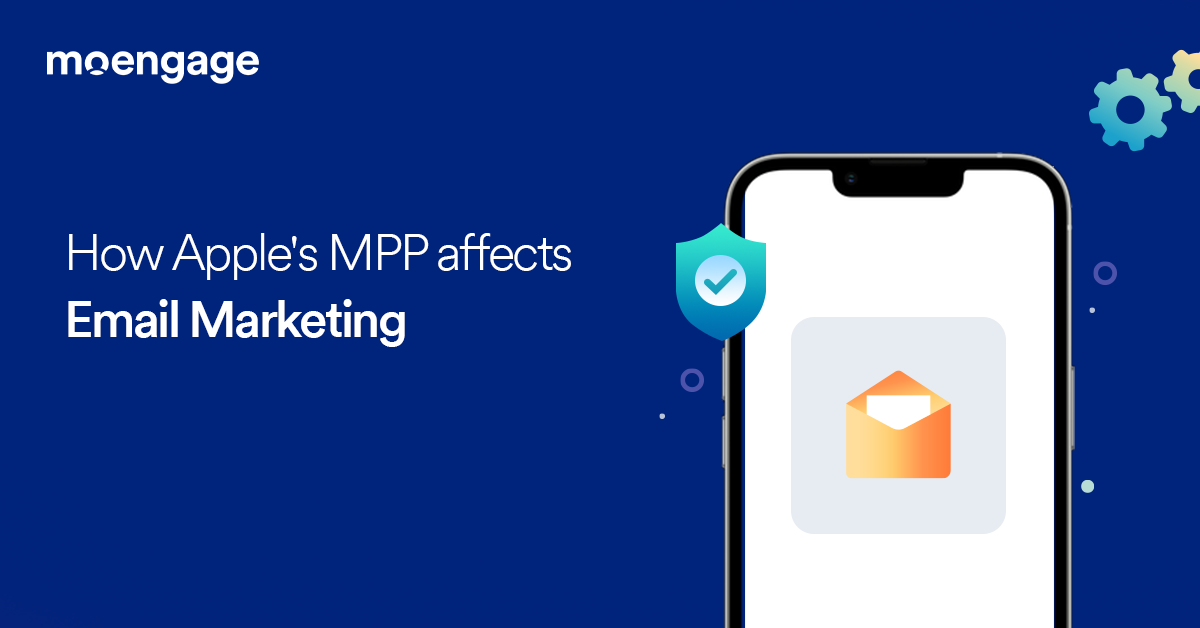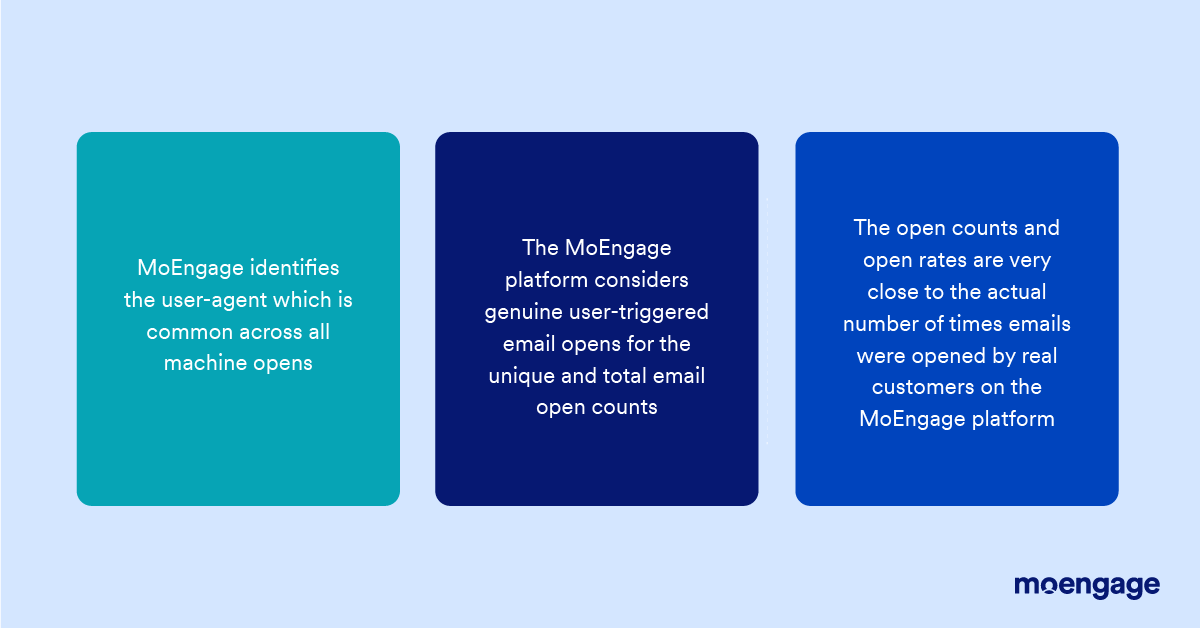What Is Apple Mail Privacy Protection (MPP) and How Will It Affect You?

Reading Time: 4 minutes
Apple has been tightening its stand around privacy for the last few years, giving its customers more control over their data. Keeping this ethos in mind, Apple introduced a new feature: Mail Privacy Protection (MPP). Released in September 2021, the Apple MPP feature is available for customers using the Apple Mail app on iOS 15, iPadOS 15, macOS Monterey and watchOS 8, should they choose to enable mail privacy on the app. Apple MPP matters because it is going to change how email marketers look at metrics.
What is Apple Mail Privacy Protection (Apple MPP)?
According to Apple’s announcement of MPP, “The new feature protects consumers by preventing marketers from knowing when they open an email and masks their IP address so it can’t be linked to other online activity or used to determine their location.”
Let’s break this down.
As you may know, to measure how email campaigns are working, email marketers usually add a single 1px by 1px square transparent image in their email messages. When a receiver opens this email, the image gets downloaded. This image captures different types of data like when the mail was opened, which platform it was opened on, location and more. All the analytics captured helps marketers relate better with their customers, curate better content, and keep them engaged with relevant emails.
Now, with Apple’s MPP, customers will be given an option to opt-in to Apple’s new feature when they update their software to any of the MPP-supported Apple devices. When an organization sends an email to a customer using the Apple Mail app, Apple stores and downloads the entire email on its own server. In this process, the server stores all the images, including the email-tracking pixel. Email marketers might believe that the email was opened by the customer erroneously. If the customer chooses to open the email, the Mail app downloads the email from the Apple server, which blocks the receiver’s actions from the email service providers. This is how open rates, geolocation, and other data get affected. The tracking pixel cannot analyze customer details that are helpful and relevant for personalization.
How Does MPP Affect Email Marketing?
As we have discussed in our previous article on iOS 15, Apple’s MPP has forced marketers to rethink how they should measure metrics for email marketing. To recap the most important points:
Open Rates are not the most accurate indicators anymore: Since Apple preloads the tracking pixels on its proxy servers, the open rates are now going to be inflated. It doesn’t matter if the email account is with Gmail, Yahoo, or Hotmail, as long as your customer accesses the mail from the Apple Mail app.
Segmentation based on geolocation and time needs to change: MPP will affect any email campaign that is centered around geolocation or time-based strategies. The Apple servers send the email content from their servers, thereby blocking the geolocation and IP address. There will be an IP address, obviously, but this will be of the Apple servers.
How Can You Work Your Way Around Apple’s Mail Privacy Protection?
While Apple MPP has changed how email marketing metrics are measured, it isn’t the end of email marketing campaigns as we know. As a marketer, you just need to recalibrate how to measure your engagement metrics.
The genuine user-open is not easily identifiable as Apple caches all the images and will show them to the customers by downloading the data from their servers and not MoEngage.
MoEngage’s engagement platform identifies ‘machine-opens’ (in this case, emails downloaded and stored in proxy servers) and differentiates them from genuine triggered opens by analyzing the user-agent from which a particular open was triggered.

We have identified the user-agent which is common across all machine opens. This is usually very long and complex compared to a genuine user-triggered open (something like “Mozilla/5.0/“). By analyzing the user-agent attribute in the Email Open event, the MoEngage platform has been effectively able to differentiate between automated machine-opens and genuine user-triggered opens.

The platform also actively removes all machine opens from calculations. The unique and total email open counts along with open rates calculations don’t include the machine-open numbers but only consider genuine user-triggered email opens. By discarding the machine-open records, the open counts and open rates are very close to the actual number of times emails were opened by real customers.
Further, MoEngage will also be providing the machine-open numbers as a separate entity for customers to view and understand how big of an impact MPP is. It is important to remember that machine opens are never considered in any of the calculations since that would mean the numbers shown are highly inflated.
With the advent of the Apple Mail Privacy Protection, the MoEngage platform will not be analyzing all the user-open emails via the MPP, and thus the open numbers will be a bit underreported. However, the numbers will be genuine since the platform removes all opens triggered by Apple servers.
Final Thoughts
The job of a marketer is not an easy one, especially if you are trying to personalize and connect with your customers. While Apple MPP might have some effects on how you engage with your customers, it is also a great opportunity to rethink your engagement strategies. After all, as the adage goes: “Change is the only constant.”














